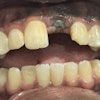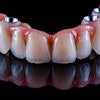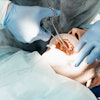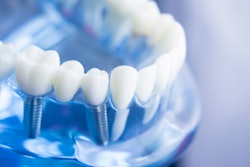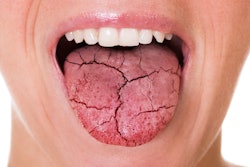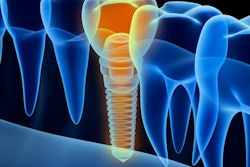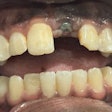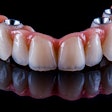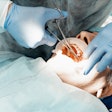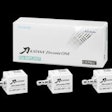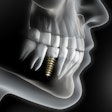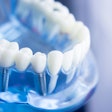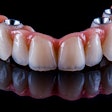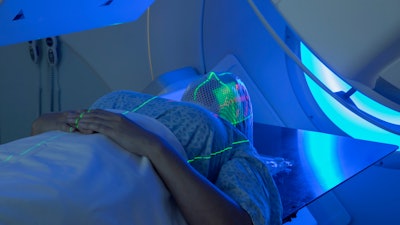
For patients with head and neck cancer (HNC), implants in the irradiated upper jaw may have lower survival rates than those placed in the lower jaw. This research was published on September 11 in Oral and Maxillofacial Surgery Clinics of North America.
Furthermore, implants in irradiated bone grafts or free flaps may have even lower success rates. The added risks from radiation therapy should be considered to ensure successful implantation in cancer patients, the authors wrote.
"Irradiated patients should be informed about the potential complications associated with dental implant installation, such as implant failure and osteoradionecrosis," wrote the authors, led by Dr. Yoram Fleissig, MSc, of the Hebrew University of Jerusalem in Israel.
The research team reviewed existing literature on the long-term survival of dental implants in patients with HNC who have undergone radiation therapy. There was variability in reported radiation doses and their impact on implants, emphasizing the need for cautious analysis.
Several studies suggest higher long-term survival rates for dental implants in an irradiated mandible versus the maxilla. This difference is likely due to variations in bone density, volume, and vascularization, with the mandible offering better stability. Implants in the anterior mandible are particularly successful, as this area often avoids radiation in patients with HNC, the authors wrote.
Implants were found to be a reliable option for HNC patients, but success varied based on factors like implant location and radiation exposure. Secondary implants were preferred, especially when considering potential tumor recurrence, but some patients may hesitate due to treatment fatigue, they wrote.
Moreover, careful patient selection was crucial when considering primary dental implants in patients with HNC. For primary implants, it was recommended to wait at least six months after radiotherapy before connecting the abutment. This delay allows for better osseointegration and gives time for the effects of radiotherapy on the soft tissue to subside.
For HNCs, therapeutic radiation doses typically range from 50-70 Gy, with postoperative adjuvant doses between 60 Gy to 66 Gy. The standard daily dose is 2 Gy, and treatments can be given once or twice daily. Implant failure was rare when radiation doses were below 40 Gy to 50 Gy, according to the review.
However, the review had limitations. Many studies are retrospective, which may introduce bias and limit the quality of evidence. There is a need for more robust prospective studies and randomized trials, the authors wrote.
"While dental implants offer significant benefits for oral restoration in patients with head and neck cancer, careful consideration of patient specific factors and treatment modalities is crucial to ensure optimal outcomes," they concluded.

